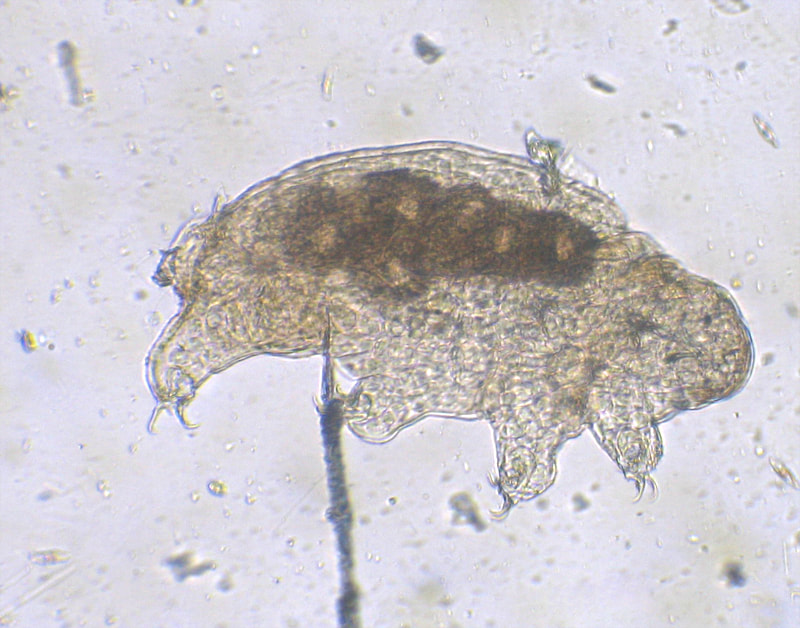 Tardigrade from wikimedia.org
Tardigrade from wikimedia.org - Rotifers
- Nematodes (worms)
- Bristle worms
- Tardigrades (among the most complex metazoa in wastewater)
| BIOLOGICAL WASTE TREATMENT EXPERT |
|
 Tardigrade from wikimedia.org Tardigrade from wikimedia.org As a wastewater treatment system "matures" (decrease in soluble BOD5), dissolved oxygen concentrations eventually rise to levels that can support multicellular lifeforms. Unlike bacteria (prokaryotes) and protozoa (eukaryotes) which are all single cellular organisms, metazoa are more complex organisms with differentiated cells. These organisms feed on microbial floc and protozoa present. While seen with excellent water quality, an abundance of metazoa indicates an older sludge. The biggest problem with older sludges (very low F/M) is the increase in effluent turbidity and pin floc carryover in the secondary clarifiers. Common wastewater metazoa include:
12/18/2018 10:31:31 pm
This has all the information on it that was good to have this it has much knowledge that was good to get this. I have to prepare report on this so I collect this data and send it to the writing company so they can make report on this. Comments are closed.
|
AuthorErik Rumbaugh has been involved in biological waste treatment for over 20 years. He has worked with industrial and municipal wastewater facilities to ensure optimal performance of their treatment systems. He is a founder of Aster Bio (www.asterbio.com) specializing in biological waste treatment. Click to set custom HTML
Archives
April 2024
|